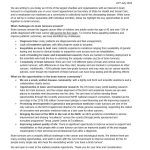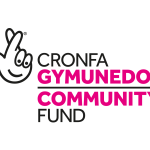brainstrust has won a £1,000 Movement for Good award thanks to nominations from the public
brainstrust was nominated to win a £1,000 boost as part of specialist insurer Ecclesiastical’s Movement for Good awards, which is giving £1million to charities this summer.
This £1,000 will go towards producing more of our information standard accredited resources for people living with a brain tumour and their loved ones. Our resources include a Fatigue Resource, Patient Guides, Proton Beam Therapy Guides and more.
“Our brain box was very welcome, I have enjoyed the book, and there is a lot of useful info in the file. We have had to smile at the pink brain stress ball, my hubby used it to show our grandchildren (aged 4 and 7) where grandad’s brain is poorly. The four year old likes to show everyone now and tells with great authority what each part of the brain does!!”
Caregiver, Midlands
“Just to say how good I think the Fatigue book is. Very professional which is unusual to find in these sorts of publications. Some very good pointers and easy to read and sensible and well designed. I would recommend it to non-brain-tumour people too.”
Patient
Members of the public were invited to nominate causes close to their hearts, with 500 gifts of £1,000 available for donation. brainstrust was one more than 7,000 charities which were nominated by an amazing 98,000 members of the public to be in for a chance to win a financial boost.
What it means for the people we support
Tom Cowie, Head of Income at brainstrust, says:
“We are so grateful to everyone who took the time to nominate brainstrust and share the appeal on social media. It is thanks to these wonderful people that we’ve received £1,000 to go directly towards supporting people living with a brain tumour and their loved ones. Our resources are more than just a source of information, they are a source of empowerment for people affected by this terrifying disease to live the life they want following diagnosis. It means so much to us and the people that we support that we have received this contribution towards the production of more resources for our community.”
About Ecclesiastical
Mark Hews, group chief executive at Ecclesiastical, said: “As a company whose purpose is to contribute to the greater good of society, charitable giving is at the heart of our business. We know that £1,000 can make a huge difference to the incredible work that charities do and we’re looking forward to seeing how this financial boost will change lives for the better.”
- Owned by a registered charity, Allchurches Trust, Ecclesiastical is a specialist insurer of the faith, heritage, fine art, charities, education and private client sectors
- Ecclesiastical is one of the UK’s top five company givers to charity according to the 2017-18 UK Guide to Company Giving. After donating £50m to charity in three years, Ecclesiastical launched a bold vision in 2016 to raise £100m for good causes by the end of 2020. In August 2018, the Group announced it had already raised £50million towards its target. Find out more at ecclesiastical.com/ourstory
About the Movement for Good awards
- Ecclesiastical has launched a new £1million giving programme, called the Movement for Good awards which will help charities change lives for the better. 500 charities will receive £1,000 and 10 charities will receive £50,000 aimed at supporting innovation in the sector
- The £1,000 awards launch on 23 April and is open to all UK-registered charities. The £50,000 awards are open to all UK-registered charities with an income of less than £5m, which support the advancement of education and skills; citizenship or community development; arts, culture or heritage. For more information visit ecclesiastical.com/movement-for-good










